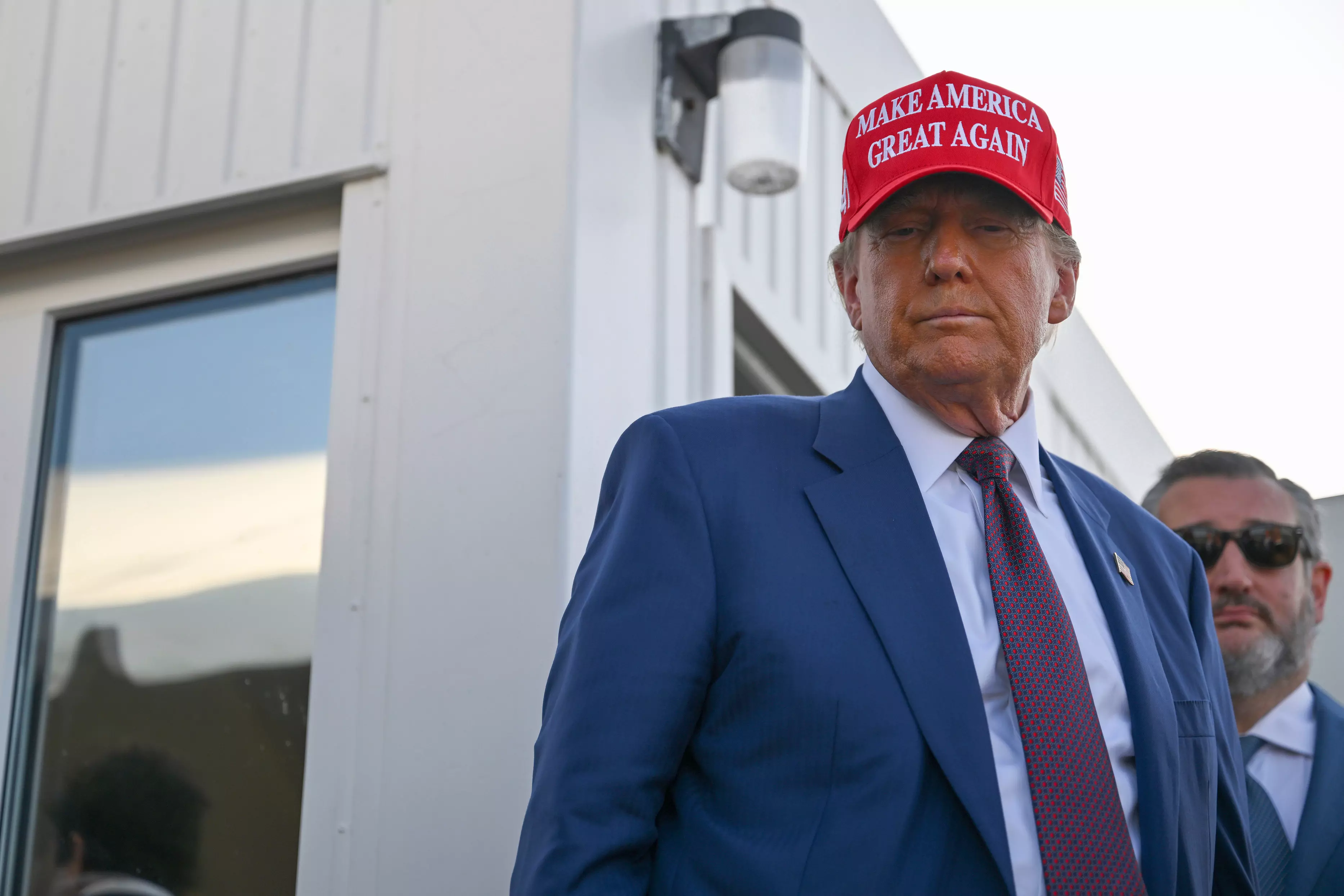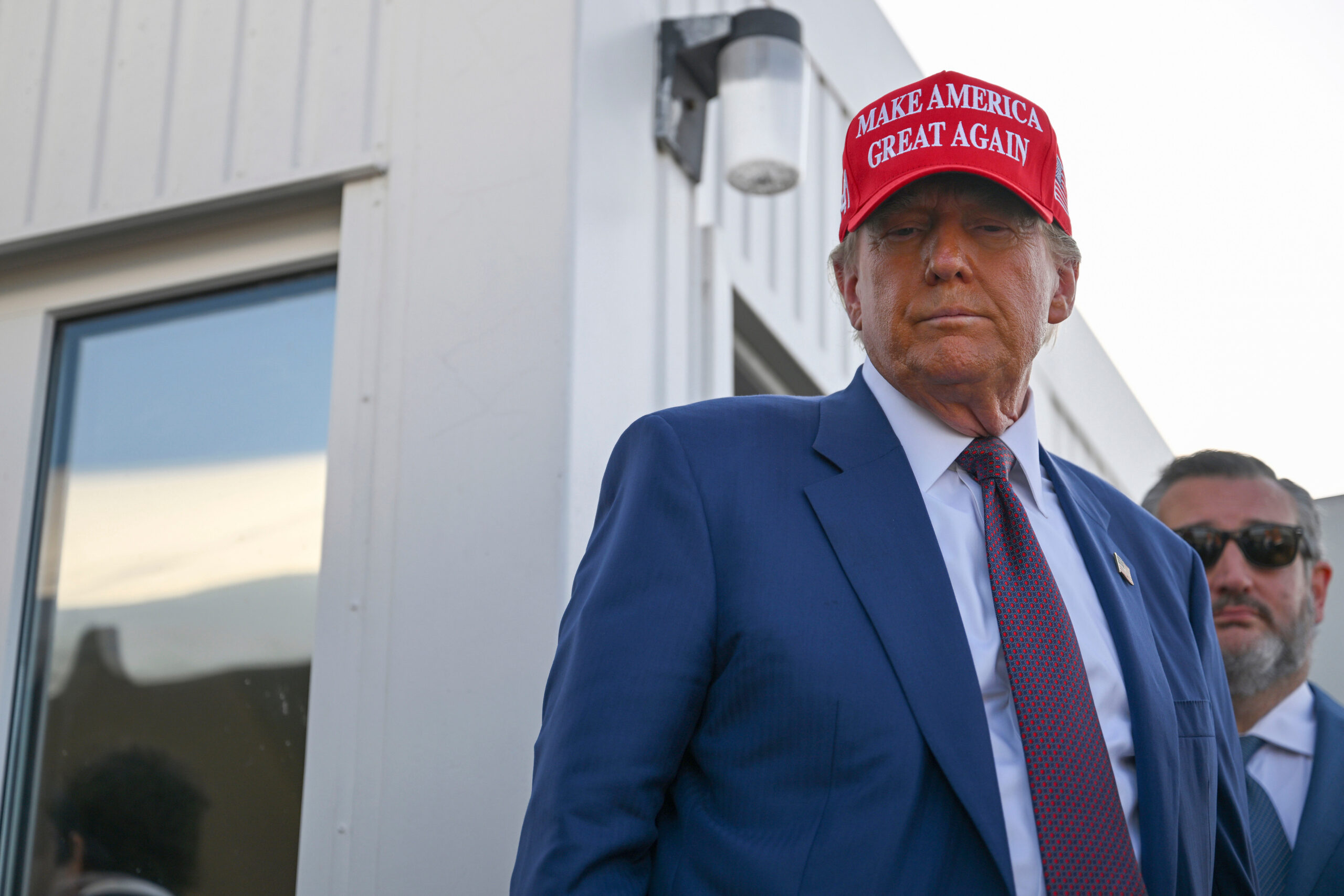
The tariffs, if implemented, could dramatically raise prices on everything from gas to automobiles to agricultural products. The U.S. is the largest importer of goods in the world, with Mexico, China and Canada its top three suppliers, according to the most recent U.S. Census data.
Trump made the threats in a pair of posts on his Truth Social site Monday evening in which he railed against an influx of illegal migrants, even though southern border apprehensions have been hovering near four-year lows.
“On January 20th, as one of my many first Executive Orders, I will sign all necessary documents to charge Mexico and Canada a 25% Tariff on ALL products coming into the United States, and its ridiculous Open Borders,” he wrote, complaining that “thousands of people are pouring through Mexico and Canada, bringing Crime and Drugs at levels never seen before,” even though violent crime is down from pandemic highs.
He said the new tariffs would remain in place “until such time as Drugs, in particular Fentanyl, and all Illegal Aliens stop this Invasion of our Country!”
“Both Mexico and Canada have the absolute right and power to easily solve this long simmering problem. We hereby demand that they use this power,” he went on, “and until such time that they do, it is time for them to pay a very big price!”
Trump also turned his ire on China, saying he has “had many talks with China about the massive amounts of drugs, in particular Fentanyl, being sent into the United States – But to no avail.”
“Until such time as they stop, we will be charging China an additional 10% Tariff, above any additional Tariffs, on all of their many products coming into the United States of America,” he wrote.
It is unclear whether Trump will actually go through with the threats or if he is using them as a negotiating tactic before he takes office in the new year.
Trump’s nominee for treasury secretary, Scott Bessent — who if confirmed, would be one of several officials responsible for imposing tariffs on other nations — has on several occasions said tariffs are a means of negotiation with other countries.
He wrote in a Fox News op-ed last week, before his nomination, that tariffs are “a useful tool for achieving the president’s foreign policy objectives. Whether it is getting allies to spend more on their own defense, opening foreign markets to U.S. exports, securing cooperation on ending illegal immigration and interdicting fentanyl trafficking, or deterring military aggression, tariffs can play a central role.”
Trump’s threats come as arrests for illegally crossing the border from Mexico have been falling . The most recent U.S. numbers for October show arrests remain near four-year lows, with U.S. Border Patrol making 56,530 arrests in October, less than one third of the tally from October last year.
Meanwhile, arrests for illegally crossing the border from Canada have been rising over the past two years. The Border Patrol made 23,721 arrests between October 2023 and September 2024, compared with 10,021 the previous 12 months. More than 14,000 of those arrested on the Canadian border were Indian — more than 10 times the number two years ago.
Last week, a jury convicted two men on charges related to human smuggling for their roles in an international operation that led to the deaths of a family of Indian migrants who froze while trying to cross the Canada-U.S. border during a 2022 blizzard.
Much of America’s fentanyl is smuggled from Mexico. Border seizures of the drug rose sharply under President Joe Biden, and U.S. officials tallied about 21,900 pounds (12,247 kilograms) of fentanyl seized in the 2024 government budget year, compared with 2,545 pounds (1,154 kilograms) in 2019, when Trump was president.
If Trump were to move forward with the threatened tariffs, the new taxes would pose an enormous challenge for the economies of Canada and Mexico, in particular.
During Trump’s first term, his move to renegotiate the North American Free Trade Agreement, or NAFTA, and reports that he was considering a 25% tariff on the Canadian auto sector were considered an existential threat in Canada. Canada is one of the most trade-dependent countries in the world, and 75% of Canada’s exports, which include automobiles, go to the U.S.
The Canadian dollar weakened sharply in foreign exchange markets immediately following Trump’s post.
The tariffs would also throw into doubt the reliability of the 2020 trade deal brokered in large part by Trump during his first term with Canada and Mexico, the USMCA, which replaced NAFTA and is up for review in 2026.
It’s unclear from Trump’s social media post how he would legally apply tariff hikes on those two pivotal U.S. trade partners, but the 2020 deal allows for national security exceptions.
When Trump imposed higher tariffs during his first term in office, other countries responded with retaliatory tariffs of their own. Canada, for instance, announced billions of new duties in 2018 against the U.S. in a tit-for-tat response to new taxes on Canadian steel and aluminum.
Many of the U.S. products were chosen for their political rather than economic impact. For example, Canada imports just $3 million worth of yogurt from the U.S. annually and most of it comes from one plant in Wisconsin, the home state of then-Republican House Speaker Paul Ryan. That product was hit with a 10% duty.
Spokespeople for Canada’s ambassador to Washington and its deputy prime minister, Chrystia Freeland, who chairs a special Cabinet committee on Canada-U.S. relations to address concerns about another Trump presidency, did not immediately comment on the threats.
Trump’s promise to launch a mass deportation effort is a top focus for the Cabinet committee, Freeland has said.
A senior Canadian official had said before Trump’s posts that Canadian officials were expecting him to issue executive orders on trade and the border as soon as he assumes office. The official was not authorized to speak publicly and spoke on condition of anonymity.
Mexico’s Foreign Relations Department and Economy Department also had no immediate reaction to Trump’s statements. Normally such weighty issues are handled by the president at her morning press briefings.
Last week, a senior Chinese commerce official said higher tariffs on Chinese exports would backfire by raising prices for consumers. Vice Commerce Minister Wang Shouwen also said China can manage the impact of such “external shocks.”
Trump in early November had said that, if elected, he would inform Mexico’s new president, Claudia Sheinbaum, on day one that she must stop the flow of migrants and drugs into the U.S. or risk a 25% tariff on Mexican imports.
“If they don’t stop this onslaught of criminals and drugs coming into our country, I am going to immediately impose a 25% tariff on everything they send into the United States of America,” he told supporters in North Carolina.
